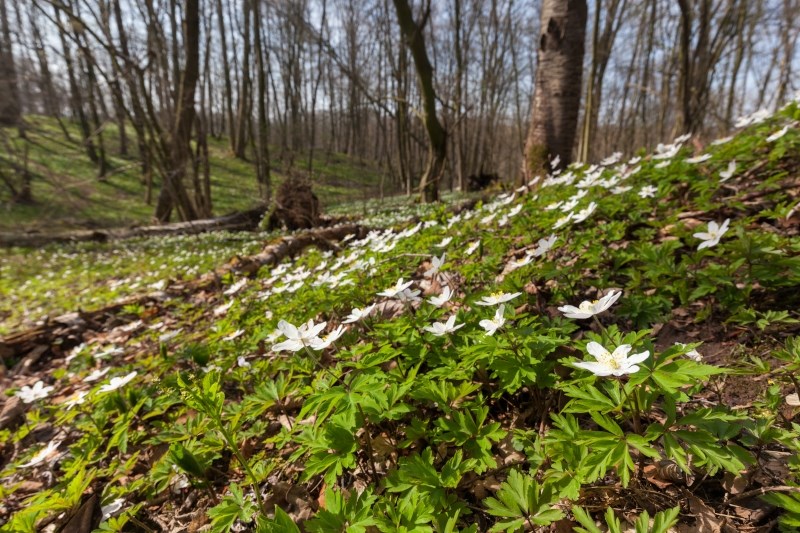FOURCAST - FOrest cold and URban heat island effects on Climate Adaptation of biodiversity at different Spatial and Temporal scales

(photo Jeroen Mentens - Vildaphoto)
Details
Objectives : the project has 6 WP's. INBO is mainly responsible for WP3 but is also involved in WP4, and may also contribute to the other WP's.WP1 - A gridded dataset of historical climate data will be produced that, for the first time, includes urbanization and forest microclimate effects on past and current climate. It will contain monthly temperature and precipitation data from 1900 to today at a 1-km resolution over Belgium. An innovative methodology based on a combination of historical climate observations, a dynamically downscaled reanalysis dataset and data on the evolution of land use and land cover over Belgium will be used. The resulting gridded dataset is important in itself to demonstrate urbanization effects on the Belgian climate but will also be invaluable for WP2 and WP3.
WP2 - Using Belgian plant specimens in the Meise BG herbarium, combined with contemporary observations from waarnemingen.be, and specimens of Carabids, spiders and isopods from the RBINS entomological collection we will study multiple responses of the Belgian fauna and flora to climate change, while accounting for urbanization and buffering effects of forests. Within this work-package we aim to study how the phenology of plants and arthropods have changed in Belgium over the past 100 to 150 years. In addition, for plants we will study past changes in leaf functional characteristics and leaf nutrient and isotope composition by using herbarium specimens complemented by newly sampled plants. By relating changes to accurate past climate data accounting for the urban and forest environments (WP1), we aim to assess how species respond to climate change, for example through phenological shifts and changes along the Leaf Economics Spectrum 30,31. This will allow us to detect which species (groups) were mostly affected over the last century, and predict which species will be mainly affected in the future. These data will provide us with valuable tools for setting conservation priorities and decision making for (re-)introductions.
WP3 - In this WP we aim at detecting climate induced changes over the past 25 years in the forest floor and the rooting zone of the mineral topsoil, the most important habitat for soil fauna and forest understorey plants in 56 well documented forest plots belonging to the Soil Fauna Network. For each of these plots, we describe mechanistically how macroclimate (WP1, WP5) relates to forest microclimate and further to soil temperature and moisture regimes controlling their pedoclimate. All plots are reassessed to detect temporal changes in humus form and physical, chemical and biological soil quality. By dendrometrical reassessment of the forest and canopy structure, changed light conditions will be quantified as well. Furthermore, the actual distance of each observation plot to residential and urban settlements is determined in order to detect the magnitude of UHI effects on forest micro- and pedoclimate.
WP4 - We will assess how more recent climatic changes (<25 years) affect the functioning and biodiversity of forest ecosystems in the northern part of Belgium. Forests may mitigate the effect of macroclimatic changes through microclimatological buffering. Yet, the extent to which forest stand characteristics (e.g. forest size, tree and soil type,…) affect microclimatological buffering remains poorly documented. Moreover, climate change not only translates into increased average temperatures, but also into increased frequencies of climatological extremes that may increase local species extinctions. Assessing species community shifts towards warm-dwelling species, i.e. thermophilization, may therefore provide additional relevant information for biodiversity conservation compared to direct temperature effects as it takes these demographic properties of species (meta-) communities into account. We will re-sample plant and soil fauna in the 56 highly documented forest plots (WP3) to (i) test if climate change affects forest ecosystem functioning and the thermophilization of plant and animal species assemblies, (ii) identify the major forest stand characteristics from WP3 driving these changes; (iii) assess how this affects local and regional patterns of forest biodiversity and (iv) test if this causes shifts in the functional trait distribution of species communities.
WP5 - In order to isolate the urban impact on fauna and flora, a case study for the Brussels region will be set up during the project. The project aims at executing unprecedented very high-resolution weather model experiments (200m resolution) over Brussels in order to provide this case study with the necessary weather data including microclimate effects e.g. urban heat island, parks and forest effects. These experiments, building further on ongoing research in the context of the CS-MASK project (funded by Brain-be 2.0), will be the highest resolution IRM-KMI runs ever undertaken. An evaluation of 200m resolution runs is planned based on existing weather stations in the domain (e.g. synoptic stations) supplemented by temporary measurement stations along a transect in Brussels. The transect measurement points will be selected in such a way that they sample the rich diversity of landscapes in and around our capital (e.g. Sonian forest, urban parks, densely built, rural agricultural area,...).
WP6 - We will assess how the urban heat island affects performance of plants and soil fauna by setting up an innovative mesocosm experiment along UHI gradients in Brussels. On 20 locations along an urban to rural gradient, we will install weather stations and mesocosms with plants and soil fauna. In this WP, we will investigate the effect of UHI and green cover (trees, parks, forests, etc.) on functional and morphological traits of plants and soil fauna
| Status | Running |
|---|---|
| Actual start/end date | 01/01/2023 - 31/12/2026 |
Teams
INBO Research theme(s)
- Forest
- Climate
- Nature & society
Tags
- edna
